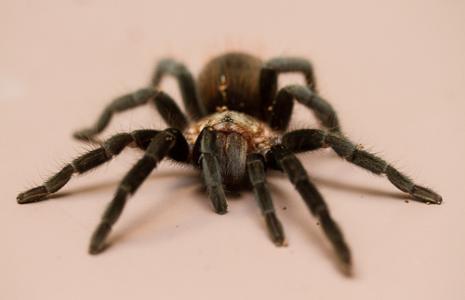South Florida Spider Survey
-
Why are we conducting a survey?
Spiders are extremely important animals. Most spiders are beneficial, reducing the populations of pests such as cockroaches. A few species are medically important and can deliver painful or dangerous bites. Despite their importance, we do not know much about the spiders that live in South Florida homes. There are no truly large collections of urban spiders from this region, as most collectors concentrate on studying natural areas.
As an international port with a tropical climate, our area has the potential to harbor a number of exotic spider species brought into the state from around the world. We need to know how widespread these species have become, what effect they may have on native species, and whether they are dangerous to humans. Also, we want to know how urbanization and habitat loss have affected naturally occurring spiders.
-
How can I participate?
We are asking people to collect spiders in their homes and gardens, fill out a simple data sheet about their collection, and send or bring them to the Ft. Lauderdale Research and Education Center. Once the specimens arrive here, we will identify the specimens, make a collecting record, and place the spiders in the collection. If requested, we will contact the person submitting the spider with information about its identity. Spiders collected in the survey will be used to create a database about the distribution and abundance of the species. We will report our major results on our web site.
Disclaimer: We appreciate your assistance in this scientific project. If you have any concerns about participating, we suggest you do NOT participate. The University cannot be responsible for the treatment of bites or for any injury or illness resulting from collecting spiders.
-
Where to look for spiders
Spiders can be found almost everywhere. Some spin webs to catch their prey; others lie in wait for insects; still others actively hunt for prey. Some spiders are active during the day, many are more active at night. Look for webs inside and out. Most web spinning spiders spend the day in a retreat next to the web, often curled in a leaf or in a crevice, and hang in the web at night. In the house, look in corners, especially along the ceiling, and around windows and in houseplants. Hunting spiders can be found walking on walls and floors.
Garages and storage areas are often dark and quiet, and full of spiders. Outside, look in bushes, trees and hedges, under piles of dead leaves, under rocks and pots, along fences, on walls and window sills
-
How to catch spiders?
Carefully. Although almost all spiders have venom, they rarely bite and many have fangs which are too small to pierce skin. Widow spiders are the most potentially dangerous spiders in this area. Yellow sac spiders can deliver a painful, necrotizing bite. Florida has many reports of brown recluse bites, but only a handful of specimens have ever been found in the state. For more information on these and other poisonous spiders, see our links to Spider-related Resources on the right.
The best containers to use for capturing spiders are semi-transparent film canisters or other snap top plastic vials, however any small container with a securely fitting lid will work. Baby food jars are a good size. Spiders in webs will usually drop to avoid danger. Therefore, hold the vial underneath the spider and slide it up and over the spider. For spiders on a flat surface, place the container over the spider and slide an index card or similar piece of paper underneath. The spider usually moves up and the container can be turned over and the lid snapped on. An easy and safe way to slow down a spider is to spray it with a glass cleaner with ammonia (like Windex). This will stun the spider and make it easy to collect.
NOTE: In the very unlikely event that you are bitten by a spider while trying to collect it, seek medical attention.
-
How to preserve the spiders
Spiders must be preserved in alcohol. 70% ethyl alcohol is best, but isopropyl alcohol (rubbing alcohol) is the easiest preservative to obtain. Newly caught spiders can be placed directly in the alcohol or they can be placed in the freezer for about 15 minutes to kill them, and then placed in alcohol. Preserved spiders can be mailed to us in padded envelopes or small boxes. Before packing the vials, empty the alcohol and put a small piece of cotton, paper towel or tissue, saturated with alcohol, in the vial. Securely fasten the lid, and wrap each vial with a piece of newspaper before packing in the shipping container.
-
Fill out and send in the data form
Download and print the Spider Survey Datasheet (7KB pdf), or compile a sheet with the following data:
- Name of collector
- Address
- Phone/e-mail
- Date collected
- Where and how collected
- House / Garden
- Day / Night
- Description of habitat
Mail to:
- South Florida Spider Survey
Ft. Lauderdale Research & Education Center
3205 College Ave.
Ft. Lauderdale, FL 33314-7799
Or:
Bring the spiders to the center. We have a box in the lobby where you can drop them off, along with your data sheet.
Thank you for participating in the survey and helping us with our project. Please visit our web site occasionally to see updates.
Spider collecting instructions and other materials generously provided by Dr. Brian Brown, Curator of Entomology, Natural History Museum of Los Angeles County. Visit the Los Angeles Spider Survey Web site.

Tarantula spider
Contact
South Florida Spider Survey
Ft. Lauderdale Research & Education Center
3205 College Ave.
Ft. Lauderdale, FL 33314
Dr. Bill Kern
954-577-6329
whk@ufl.edu
